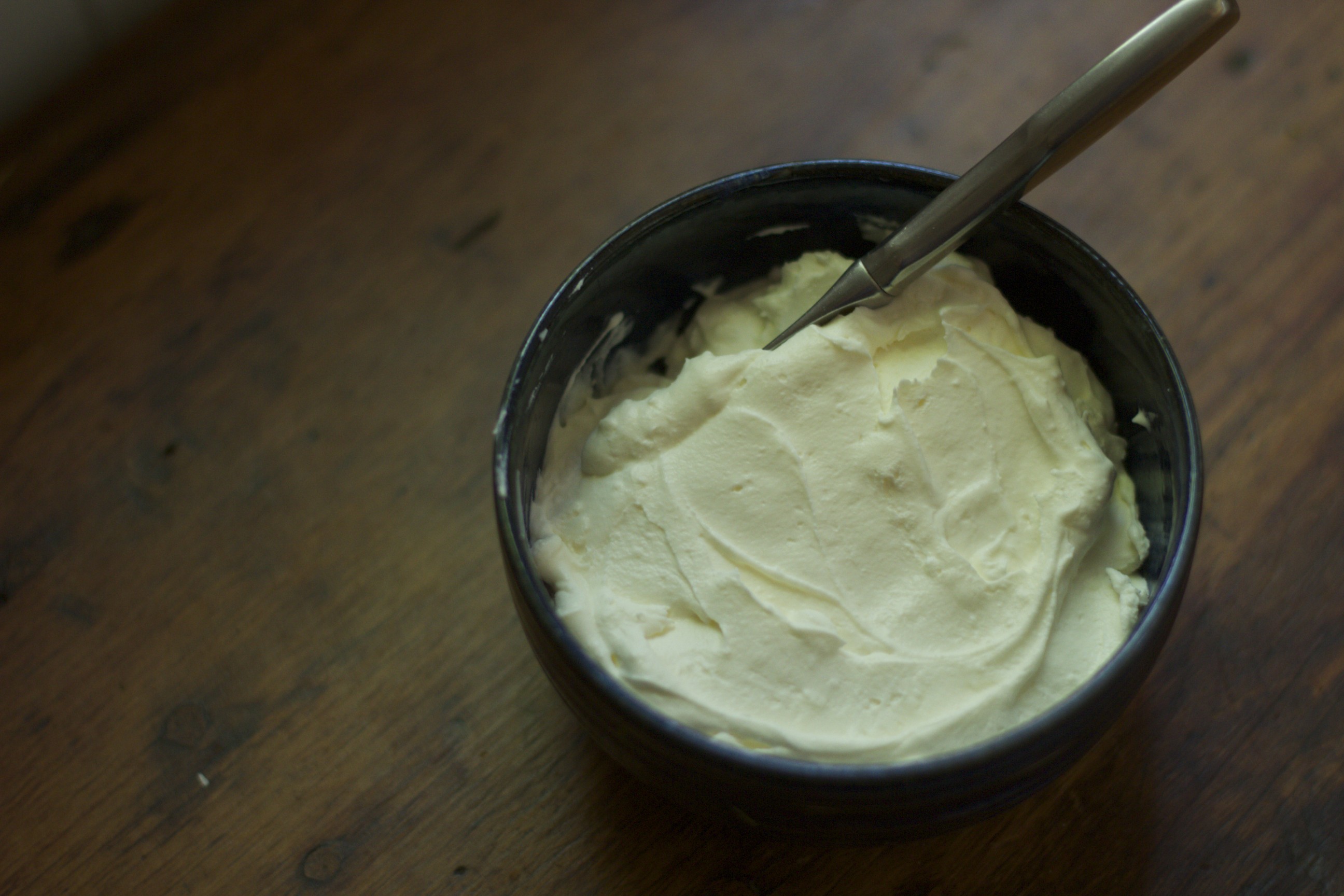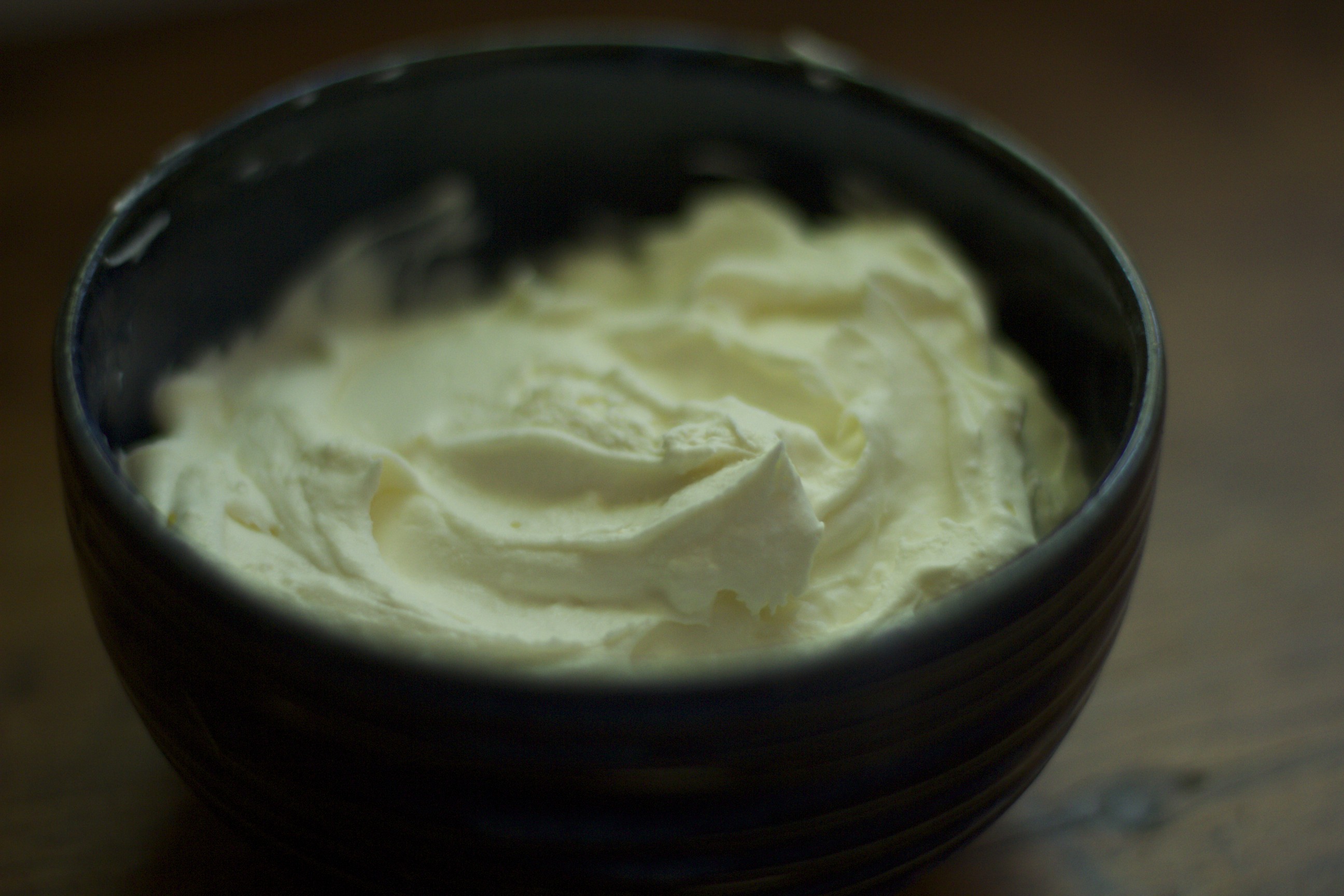
One of my favorite homemade food transformations is making cheese. I make yogurt regularly, but cheeses are an infrequent kitchen project. Most of the cheeses I have attempted are fairly simple soft cheeses but even these are an opportunity to see and be part of the way that cultures can completely change milk.
My latest cheese interest has been cream cheese. I've made creme fraiche and ricotta, tried mascarpone, and strained yogurt until it becomes as thick as cream cheese. But only recently have I tried to make cream cheese from scratch. Although it is possible to find many varieties of good quality cheeses, making some of them yourself means you know exactly what goes into the cheese and you can have more control over the way they turn out.
Even if its not something you regularly keep on hand (I don't), making cream cheese is not overly complicated and is a versatile ingredient. At its simplest it is perfect for spreading on a bagel, a muffin, or a quick bread. It can be flavored with herbs into a chevre like spread for crackers or paired with tomato jam. Cream cheese can always go the sweet route, too, in frostings, brownies, or fruit desserts (like these pop-tarts). With all the options for using it, making cream cheese is a great way to try your hand at home dairy.
Unlike yogurt or creme fraiche, cream cheese does require some special ingredients. I discovered recently that my local co-op sells rennet and we have an urban farm store in the area that carries a lot of cheesemaking supplies. If you don't have these resources where you live, I would definitely recommend New England Cheesemaking Supply as a place to order anything you might need to have your own cheesemaking adventure.

Homemade Cream Cheese
I tried a couple of recipes, including this one which suggested that you could use buttermilk instead of the mesophilic starter and since my local cheese supply source was out, I did use buttermilk. I also looked closely at the recipe in Homemade Dairy by Ashley English which includes the option of using calcium chloride, an ingredient that helps pasteurized and homogenized milk to coagulate the way that raw milk does. As with all homemade dairy projects I suggest using the best milk and cream you can find, with the least added ingredients (many heavy creams have gums or stabilizers added).
2 cups milk
2 cups heavy cream
1 ounce buttermilk OR 1/8 teaspoon mesophilic starter
1/8 teaspoon calcium chloride mixed with 2 tablespoons water (optional)
1 drop liquid vegetable rennet dissolved in 2 tablespoons water
Pour the milk and cream into a pot with a lid. Heat to 75 degrees F (Removing the pot from the heat when it gets to 70 helped me to ensure that it would not get hotter than 75 degrees with the residual heat of the pot). Add the buttermilk or mesophilic starter and stir to fully incorporate. Add the calcium chloride, if using, and stir gently for about a minute. Add the rennet and stir to combine. Cover the pot and place in a draft free spot at room temperature (cover with a tea towel or two if your room is cooler than about 70 degrees). Leave it for at least 14 or up to 24 hours until it has reached the consistency of yogurt.
Line a colander or strainer with cheesecloth or a clean tea towel. Gently pour the cultured milk into the lined strainer. Allow to drain in the strainer for an hour. Then, tie the corners of the cloth together, making sure none of the cheese can slip out the sides. Hang above the sink so the rest of the whey can drain for about 10 hours or until it reaches your desired consistency.
When they have finished draining place the curds in a bowl or other container with a lid. Stir the curds until they are smooth. You can flavor the cream cheese with salt or herbs or use as is. It will keep in an airtight container in the fridge for a week or two.
Makes about 2 cups

No comments:
Post a Comment